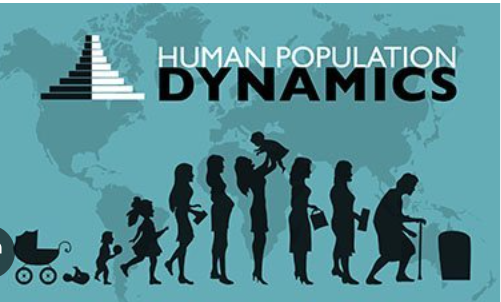

Introduction to Health and Population Dynamics
Health and population dynamics are intricately linked, shaping the world we live in today. As our global population continues to grow, understanding this relationship becomes increasingly vital. Rapid urbanization, changing demographics, and shifting health trends create a complex tapestry that influences everything from disease outbreaks to healthcare access.
Imagine living in a world where every community has equitable access to quality healthcare services. This vision can be realized through an exploration of how population changes affect health outcomes. Let’s delve into these interconnected themes and uncover the nuances behind them, shedding light on the challenges we face and the opportunities for improvement ahead. Join us on this journey as we dissect these critical factors influencing public health across borders!
The Impact of Population Growth on Health
Population growth exerts significant pressure on health systems. As more people inhabit a region, the demand for healthcare services skyrockets. This surge can lead to overcrowded hospitals and longer wait times, impacting patient care.
In many developing countries, rapid population increases often outpace infrastructure development. Basic services such as clean water and sanitation may fall short, creating fertile grounds for disease outbreaks.
Moreover, larger populations can strain resources like food supply and housing. Poor nutrition affects overall health outcomes and heightens vulnerability to illness.
The consequences of unchecked population growth extend beyond physical health. Mental well-being can suffer in crowded environments where stressors abound—like competition for jobs or inadequate living conditions.
As populations swell, the need for innovative solutions becomes essential to maintain public health standards while ensuring equitable access to healthcare resources.
Effects of Changing Demographics on Healthcare Systems
Changing demographics significantly influence healthcare systems worldwide. As populations age, the demand for geriatric care and chronic disease management rises. This shift puts pressure on existing resources.
Younger generations may require different services, driving innovation in mental health support and preventive care. Healthcare providers face the challenge of adapting to diverse needs while maintaining quality.
Urbanization is another factor at play. Cities experience higher population density, leading to increased strain on hospitals and clinics. Accessibility becomes crucial as more individuals seek timely medical attention.
Cultural diversity also shapes healthcare delivery. Providers must consider language barriers and varying health beliefs when designing programs that cater to all communities. Tailoring approaches can enhance patient engagement and outcomes.
The interplay between these demographic changes creates a complex landscape for healthcare systems, demanding flexibility and creativity from policymakers and practitioners alike.
Socioeconomic Factors and Health Outcomes
Socioeconomic factors play a crucial role in determining health outcomes. Income levels, education, and employment status significantly influence access to healthcare services. Individuals from lower socioeconomic backgrounds often face barriers that can hinder their ability to seek medical attention.
Education is another vital element. Higher educational attainment typically leads to better health literacy. Those who understand health information are more likely to make informed choices about their well-being.
Neighborhood conditions also matter. Access to nutritious food, safe housing, and clean environments directly impacts physical health. Communities lacking these resources tend to experience higher rates of chronic diseases.
Moreover, social support networks can affect mental well-being. Strong relationships provide emotional resilience during tough times while isolation may lead to various mental health challenges.
Recognizing the interplay between these factors is essential for developing effective public health strategies that address disparities in care and promote healthier communities.
The Importance of Family Planning in Improving Health
Family planning plays a crucial role in enhancing individual and community health. When families can choose when to have children, it leads to healthier parents and more stable environments for children.
Access to family planning services ensures that couples can avoid unplanned pregnancies. This control allows for better preparation, both emotionally and financially. Healthier timing often results in improved maternal and child health outcomes.
Moreover, effective family planning reduces the prevalence of sexually transmitted infections (STIs). It promotes responsible reproductive behavior, encouraging individuals to seek regular healthcare services.
When populations are planned thoughtfully, resources become more manageable. Healthcare systems can allocate their efforts toward preventive care rather than just reactive measures.
Education surrounding family planning also empowers women. It gives them agency over their bodies and futures, leading to greater participation in society and the workforce.
Strategies for Addressing Population-Related Health Issues
Addressing population-related health issues requires a multifaceted approach. One effective strategy is enhancing public health education. Informing communities about diseases, preventative measures, and healthy lifestyle choices can empower individuals to take charge of their well-being.
Investing in healthcare infrastructure is equally essential. Expanding access to medical services ensures that underserved populations receive timely care. This can reduce the burden on hospitals and clinics during health crises.
Implementing policies that promote mental health support also plays a crucial role. As demographics shift, emotional well-being becomes increasingly important for overall community health.
Fostering collaboration between government agencies, NGOs, and local organizations creates a united front against these challenges. By working together, stakeholders can share resources and expertise to develop sustainable solutions tailored to specific population needs.
Conclusion: The Need for a Holistic Approach
The interplay between health and population dynamics is intricate and vital. As we unravel these connections, it becomes clear that a multifaceted approach is essential. Understanding how population growth influences health can help policymakers make informed decisions.
Shifts in demographics create opportunities and challenges for healthcare systems. It’s crucial to adapt as populations age or diversify. These changes demand innovative solutions to ensure equitable access to care.
Socioeconomic factors cannot be overlooked either. They shape health outcomes significantly, affecting everything from nutrition to disease prevalence. Addressing disparities will require commitment across sectors.
Family planning stands out as an effective tool for improving public health metrics. Empowering individuals with information leads to better life choices, healthier families, and sustainable communities.
Addressing population-related health issues demands collaboration among governments, organizations, and the community at large. A holistic strategy acknowledges the interconnectedness of various elements in our society while paving the way for long-term improvements in overall well-being.
